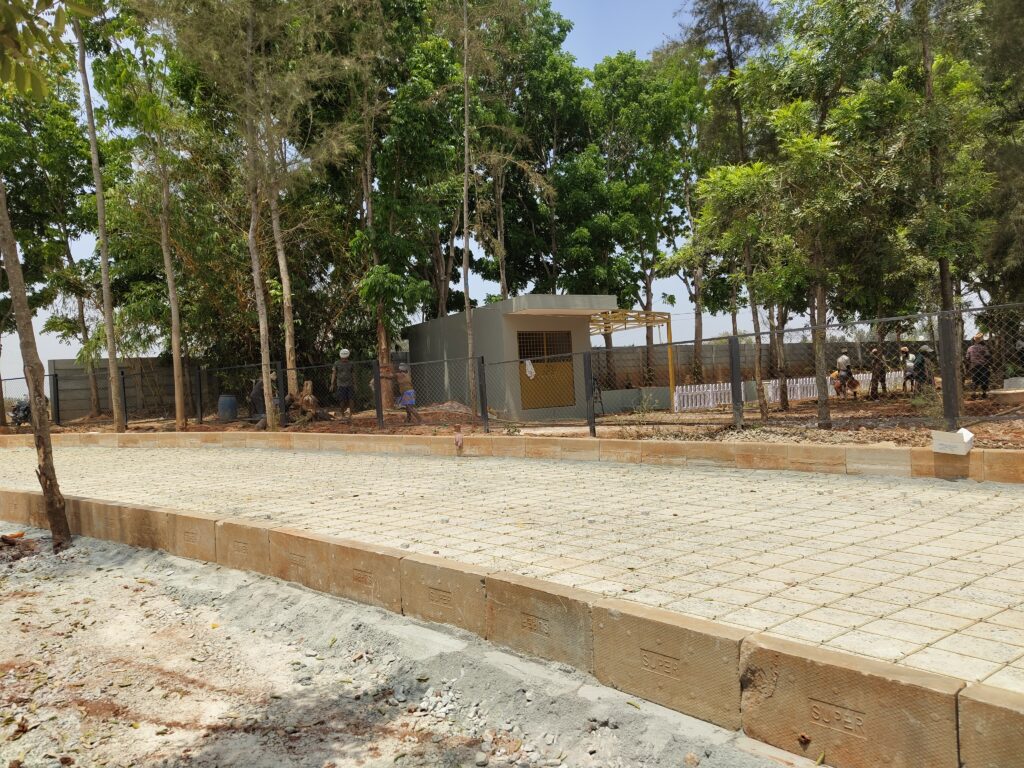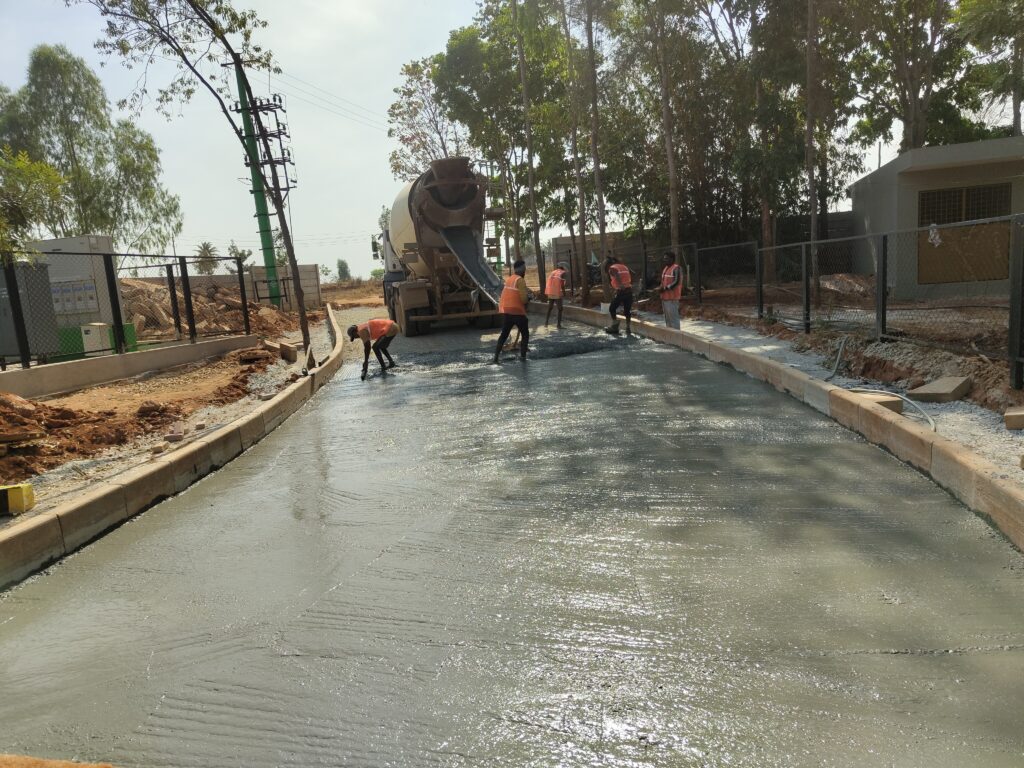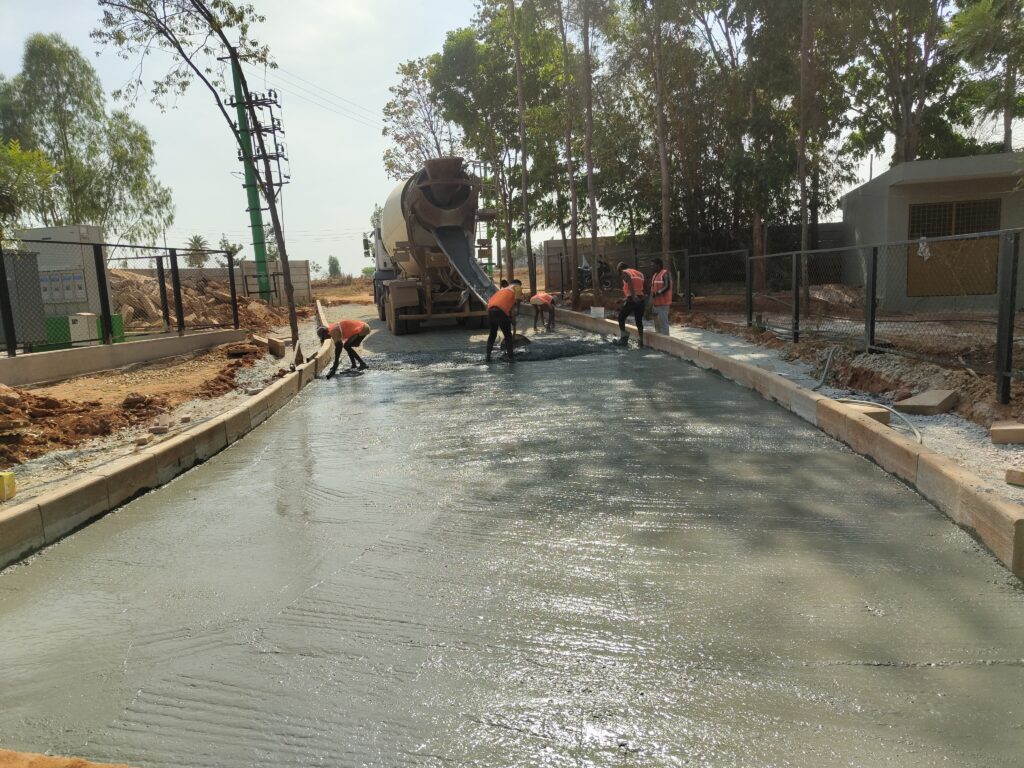1. Introduction
In a quiet corner of Nesta Ira Estates, a residential layout in progress, we took on the responsibility of laying a road that didn’t just connect houses—it connected ideas of progress, sustainability, and innovation.
While many roads are built with conventional practices, this one was different. Every layer was built with intention. Every decision was guided by one question:
Can we do this better—for the land, for the people, and for the future?
2. Breaking Ground Differently
2.1 The Base Layer: RCC with FGC Rebars
Traditionally, road bases use steel-reinforced concrete for structural stability. At Nesta Ira, we retained the proven performance of RCC but removed conventional steel entirely. Instead, we used FGC (Fiberglass Composite) rebars. Why?
● Corrosion Resistance: FGC rebars are rust-proof, unlike traditional TMT steel that corrodes over time—especially in damp soil.
● Long-Term Value: By eliminating corrosion, we eliminated the recurring cost of future repairs and patchwork.
● Structural Integrity: FGC rebars offer strong load-bearing capacity and better resistance to fatigue and chemical exposure.

3. A Surface That Speaks Sustainability
3.1 Paver Blocks Made Without Cement
Instead of using conventional concrete or cement-rich pavers, we used paver blocks made entirely from GGBS (Ground Granulated Blast Furnace Slag)—an industrial byproduct from steel manufacturing.
Why GGBS?
● Cement-Free: These pavers required no cement in their mix—cutting down significantly on the carbon footprint.
● Strength & Performance: GGBS performs just as well as cement, with better resistance to heat, moisture, and chemical degradation.
● Greener Process: Utilising industrial waste means diverting it from landfills and converting it into something of long-term value.

4.Layer by Layer: The Process
4.1 Site Preparation
● Land was cleared and graded
● Subsoil was compacted to avoid settlement issues

4.2 RCC Base with FGC Rebars
● FGC rebars were cut and laid as per design
● 100mm RCC layer was poured and levelled

4.3 Paver Bed Formation
● Dry sand bed was laid over RCC
● Pavers were aligned manually for precision
4.4 Laying Cement-Free GGBS Pavers
● GGBS pavers were carefully installed over the bed
● Edges were finished with block containment

5.Why This Matters: The Impact
This road isn’t just functional—it’s foundational to a bigger shift in how we build our spaces.
5.1 Environmental Benefits
● Zero Cement in Pavers: Significant reduction in CO2 emissions from cement production
● Use of Industrial Waste: GGBS helps manage and repurpose steel plant byproducts
● Corrosion-Free Foundation: No rusting, no repairs—less construction waste in the long run
5.2 Financial Benefits
● Lower Lifecycle Cost: No steel corrosion means reduced future maintenance
● Faster Execution: FGC rebars are easier to handle and install
● Value Engineering: No compromise on strength, but added sustainability
6. Technical Summary
The road construction at Nesta Ira Estates combined smart material choices with sustainable thinking. The base consisted of a 100mm thick RCC slab, but instead of traditional steel reinforcements, FGC rebars were used—offering higher durability, complete corrosion resistance, and a longer service life with minimal maintenance.
The real environmental impact came from the surface layer, where we used cement-free paver blocks. These were made entirely from industrial waste, particularly GGBS (Ground Granulated Blast Furnace Slag)—a byproduct known for its strength and eco-friendly properties.
Unlike standard cement pavers, these blocks helped reduce the project’s carbon footprint while maintaining the same level of performance.
Overall, this approach ensured better corrosion resistance, lower lifecycle
costs, and a significantly more sustainable outcome without compromising on structural strength.
Conclusion: Roads That Choose the Future
At Nesta Ira Estates, we didn’t just build a road—we made a decision. A decision to invest in smarter foundations, reduce the environmental footprint, and use innovation over convention.
Every material used here tells a story of thoughtful alternatives. Because when a community begins with a road like this, it doesn’t just invite people to homes. It invites them to better choices—right from the ground up.

Leave a Reply